What used to be just a part of digital marketing – content marketing evolved from being a for-the-sake-of-it practice to a specialized strategy for user engagement.
The shift is quite visible if you notice its growth over the last 6-7 years in Google Trends. Based on the data, it seems that the year 2020 was vital to the shift. While digital marketing has always been there, content gained momentum around this time.
Fast forward to today, when Google’s AI Overview is reshaping how users interact with search results. Content marketing, as we know it, is at a crossroads. AI-generated summaries are now replacing the need for users to click through to websites, challenging marketers to reimagine their strategies.
How AI is Reshaping Content Marketing
Google introduced SGE (Search Generative Experience) back in 2023; what started as an experimental tool soon turned out to become a constant feature of SERP – AI Overview. Along with each search query, the crawlers extract relevant information from the top ranking blogs and showcases them on top of the results page. So, the user can find the relevant information without having to click on a link and read through introductions and context.
As it improves the user experience for the end user, the consequences of AI Overview is dire for businesses and marketers. Since most users find the required information from Google overview itself, they won’t click on the links to third party websites.
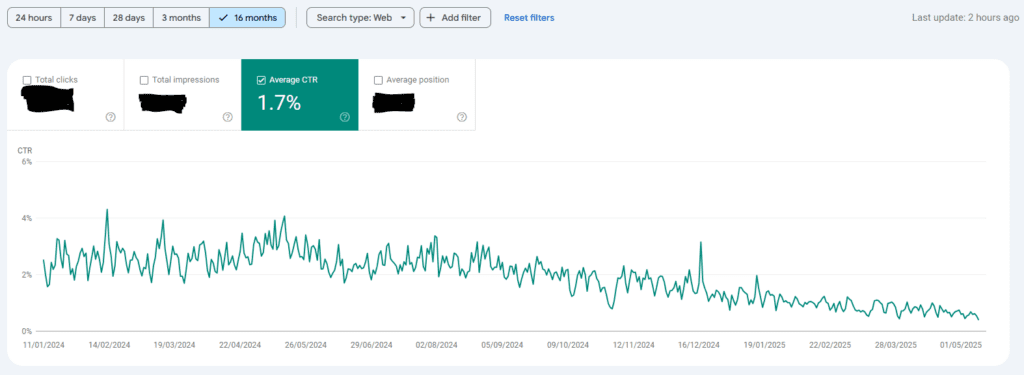
The shift is both dramatic and measurable. Above is a screenshot from GSC of one of the sites we manage. Notice the consistent decline in the click-through rate (CTR) since the latter half of 2024. Notably, that is when AI Overview rolled out on the SERP to the general public.
The Traffic Dilemma: How AI Overview is Forcing Marketers to Pivot
It’s no longer a secret—Google is absorbing the traffic that once came through informational keywords. Neil Patel highlighted, informational queries like FAQ and How To are most rampant on AI Overview.
So we decided to test this theory by running a few keywords on Google. Here is AIO in action:
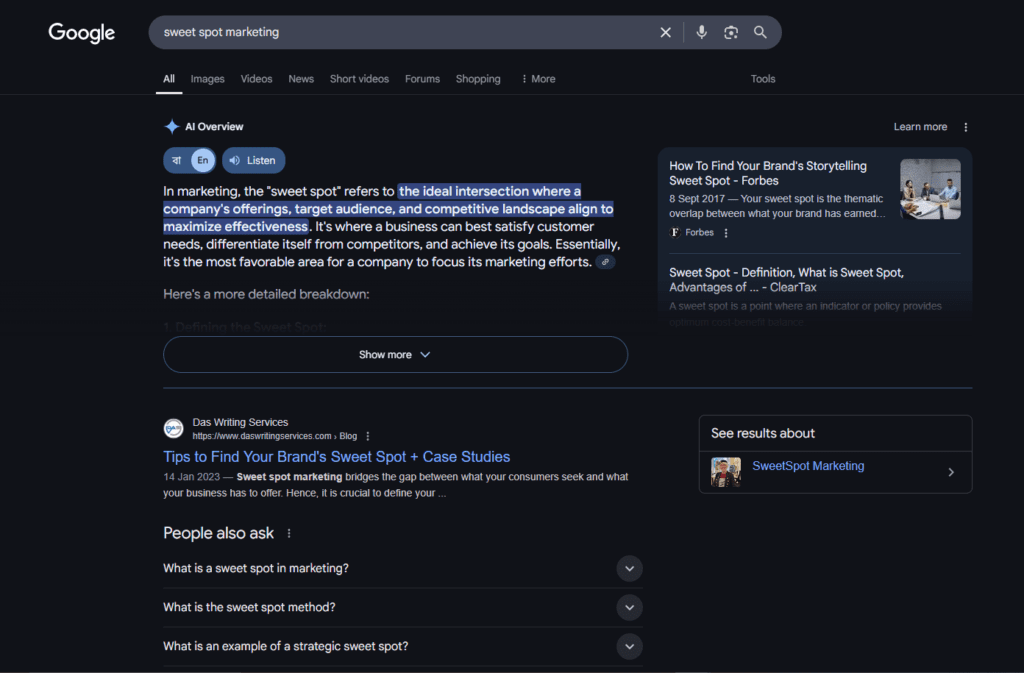
The above screenshot is an example of how AI Overview is able to solve the user query on the SERP itself, thus doing away with the need to click on a link.
Similar cases are visible across other keywords as well.
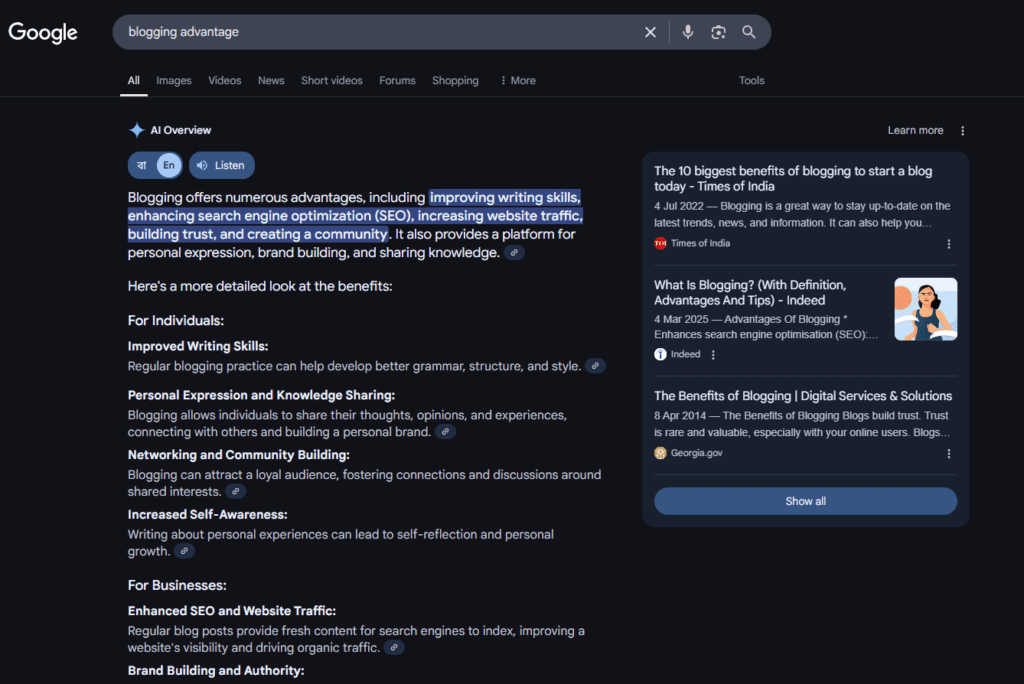
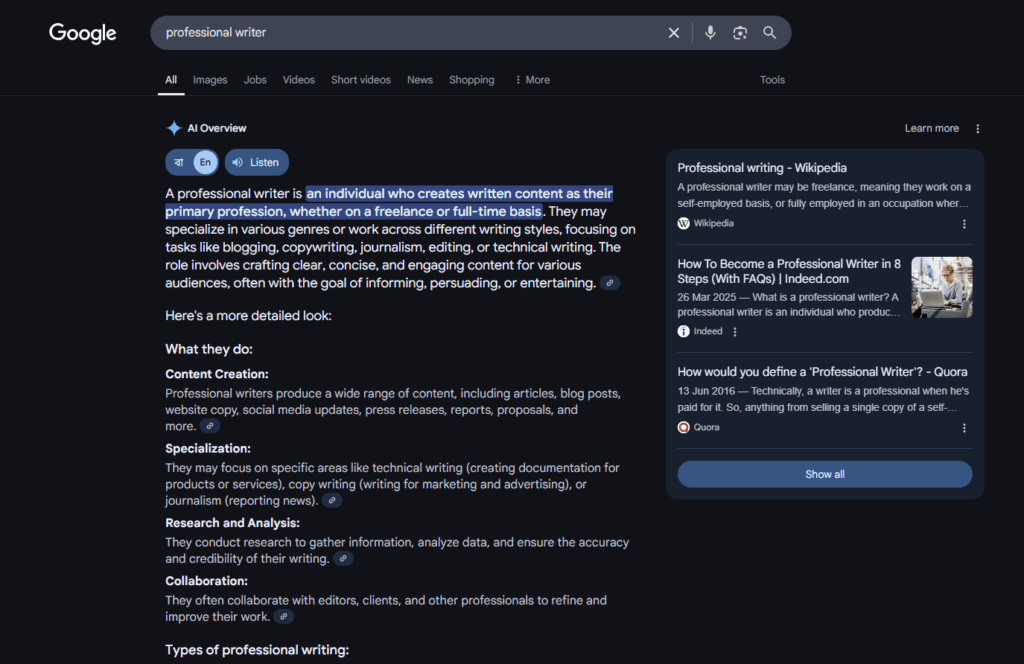
These rampant appearance of AI overviews are on the rise and this is triggering a downward slope of the CTR for most websites dependent on search marketing. However, we can do away with it – by adding a single word in between. Watch
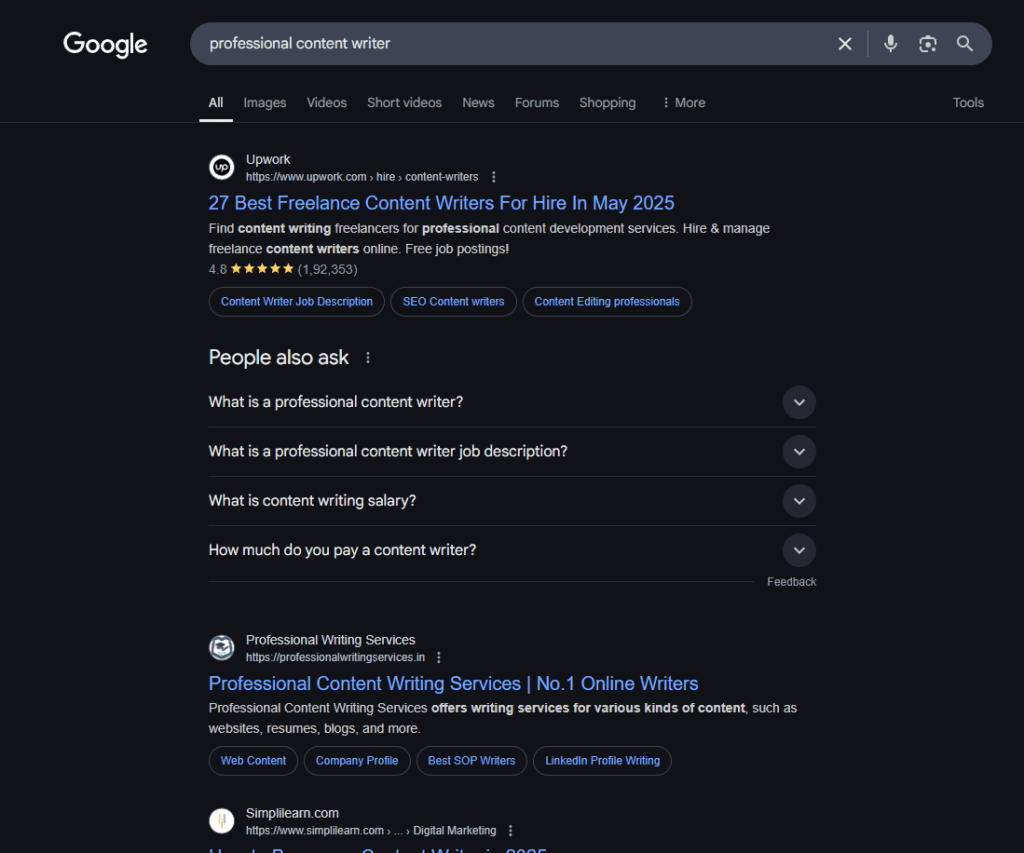
Just changing the query from ‘professional writer‘ to ‘professional content writer‘ – turns it into a commercial search intent keyword instead of an informational one. And voila! AI overview is gone.
So, if you want to pursue organic content marketing in the era of AI overview, this is high time to take stock of your positions and upgrade your strategy.
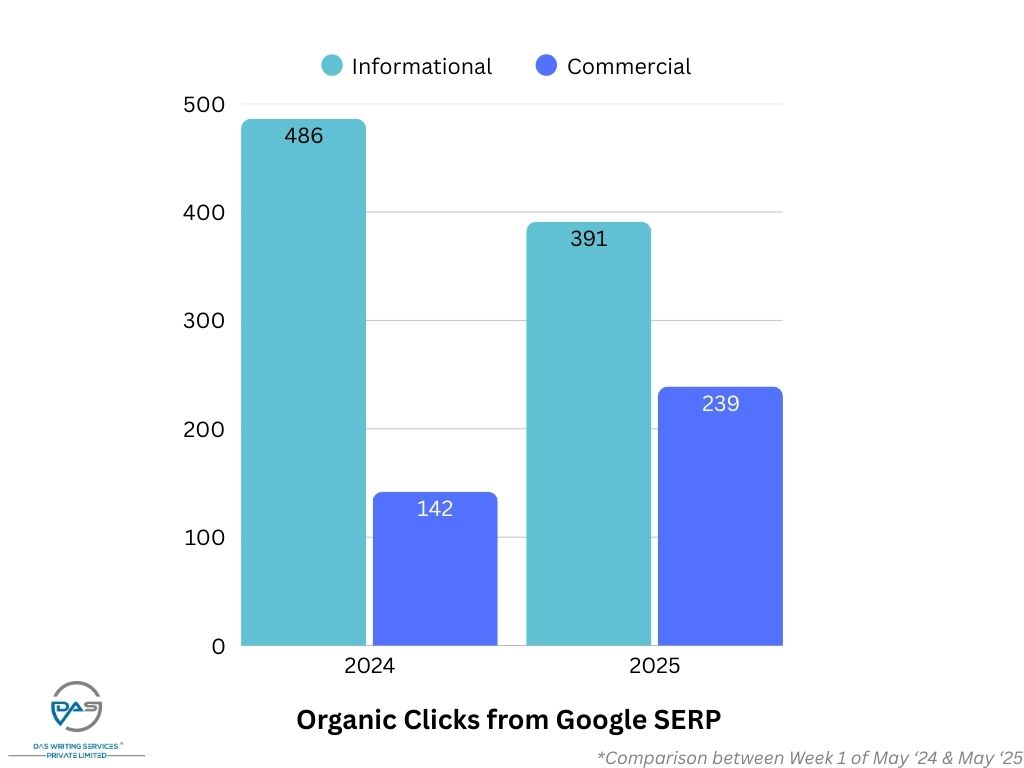
How to Upgrade Your Strategy for AI Overview in Content Marketing
As it is evident from the previous section, there is still a silver lining to the inclusion of AI overview for content marketers. When optimized properly, we are noticing that commercial keywords are performing way better than they used to before. Sure, occasional SERP features are there – but they tend to be helpful if you are able to secure a niche in the market.
So, here are a few things you can do to run an effective content marketing campaign in an industry saturated with AI Overview.
1. Focus on Keywords without AI Overview
The first and most evident trick is to bypass the AIO altogether. You can do so just by running your keyword through the SERP before finalizing it. That means typical keywords like ‘how to change tyres’ or ‘places to visit in Bali’ may not be effective in driving clicks.
Instead, you can focus on more commercial or convertible keywords such as ‘tyre replacement service’ and ‘Bali transport service’. You can see – both the suggested keywords are commercial and caters to convertible audience.
Since these queries are without AI Overview (for now) you can effectively create commercial intent-based content that both educates and targets to convert audience groups.
2. Strive for Topical Authority and Depth for Citation
In the evolving landscape of SERP content marketing, chasing higher search volume keywords simply does not guarantee performance. In order to get a real impact, work towards building topical authority.
Start by identifying the genre and topics you would want to cover. Determine your sub-genre to find what are all you can talk about. Now you can use keyword research tools, Google Trends, ads, etc. to find a series of keywords or topics for individual content.
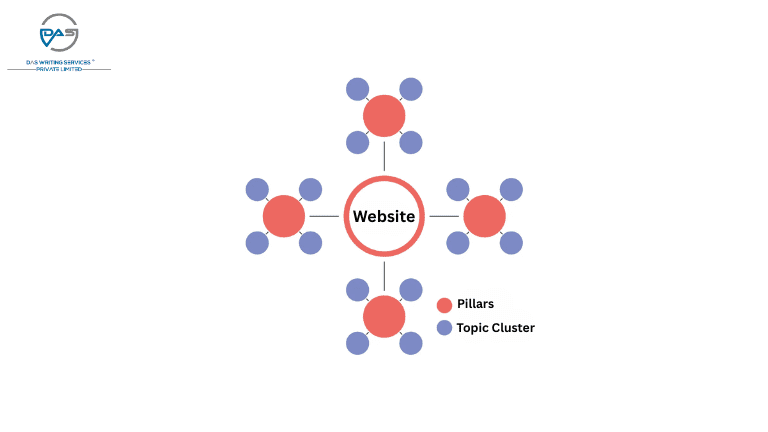
You can also use SEMRush to tap into your competitors’ keyword strategies and extract the ones relevant to you. In such cases, generative AI tools such as ChatGPT and Claude can also be helpful to build topic clusters.
With effective clustering, you can increase the organic performance potential of your pages. Further, this should help you appear on AIO as citations.
How to Future Proof your Content Marketing Strategy
With so much changing with AI Overview, content marketing may seem like a tedious task. But, it is still one of the most effective ways to engage an audience and build lasting connections.
All that’s needed is an effective strategy that can help us minimize the dependency on the SERP.
1. Diversify Content across the Marketing Funnel
Creating content only for the top of the funnel (TOFU) can be a risky strategy. Especially since the inclusion of AIO much of the ToFU keywords are generating Overviews – making such pages receive fewer clicks.
Focusing on middle or bottom of the funnel can be significantly more effective for businesses in terms of ROI. Sure, they can take a while to perform but user retention and conversion get a whole lot simpler with precision content. It caters to just the right users, creating more value for businesses.
2. Build an Email List
Especially for b2b businesses, an email list is an invaluable asset that your sales team can easily fall back on. You can refer to them in times of crisis or to test a new feature or product.
By following some tried and tested methods like gated resources and newsletters, you can build an effective list of potential clientele. It gives you immunity from algorithm shifts.
3. Implement Parasite SEO Techniques
In spite of creating in-depth content, ranks may be hard to get. If you are facing such issues, publish on high-authority third-party domains like Medium, Quora, LinkedIn, and industry magazines.
Although AI Overview is everywhere – these platforms tend to get preferential treatment on the SERPs, inviting increased clicks. Not to mention a quality backlink to your landing page is an added advantage with parasite SEO strategies.
4. Venture into Other Channels
In spite of all such measures, if you are still feeling stifled by the AI Overview, then consider other popular channels for marketing. Channels like social media platforms, podcasts, and LinkedIn Pulse can be increasingly helpful in creating an audience base.
Nevertheless, you should maintain a standard amount of on-page activity to maintain your authority and relevance in the industry. It also ensures that your website gets crawled regularly for SEO health.
Takeaway
There is no denying that AI Overview in content marketing is not a temporary thing – the feature makes information finding easier and effortless. So, it is here to stay. Now, it is up to us as marketers to use it to our advantage. If Google’s AI Overview continues to dominate the SERP, we can use this opportunity to create in-depth authoritative content.
Thus, get featured as citations – strengthening the brand value. By transitioning from click dependency to value creation across multiple touchpoints, marketers can still win – maybe not with CTRs, but with trust, engagement, and conversions.

Ritish Dutta is a seasoned Content Developer with over 7 years of experience in the industry. Currently, at Das Writing Services, he writes SEO-optimized content that caters to our diverse clientele. Ritish utilizes his critical insights and experience to talk about digital marketing, SEO content writing, content strategy, and AI.

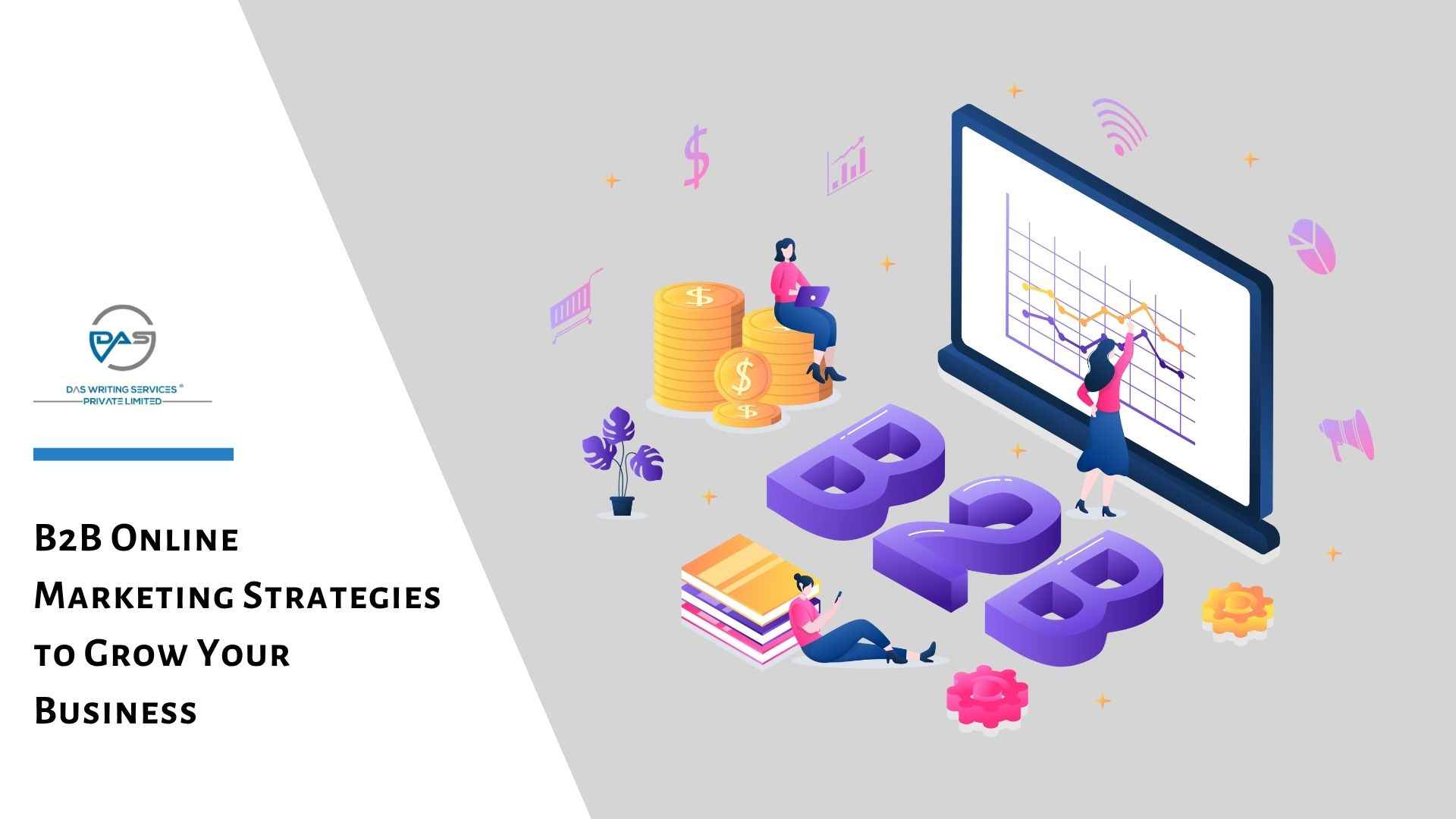
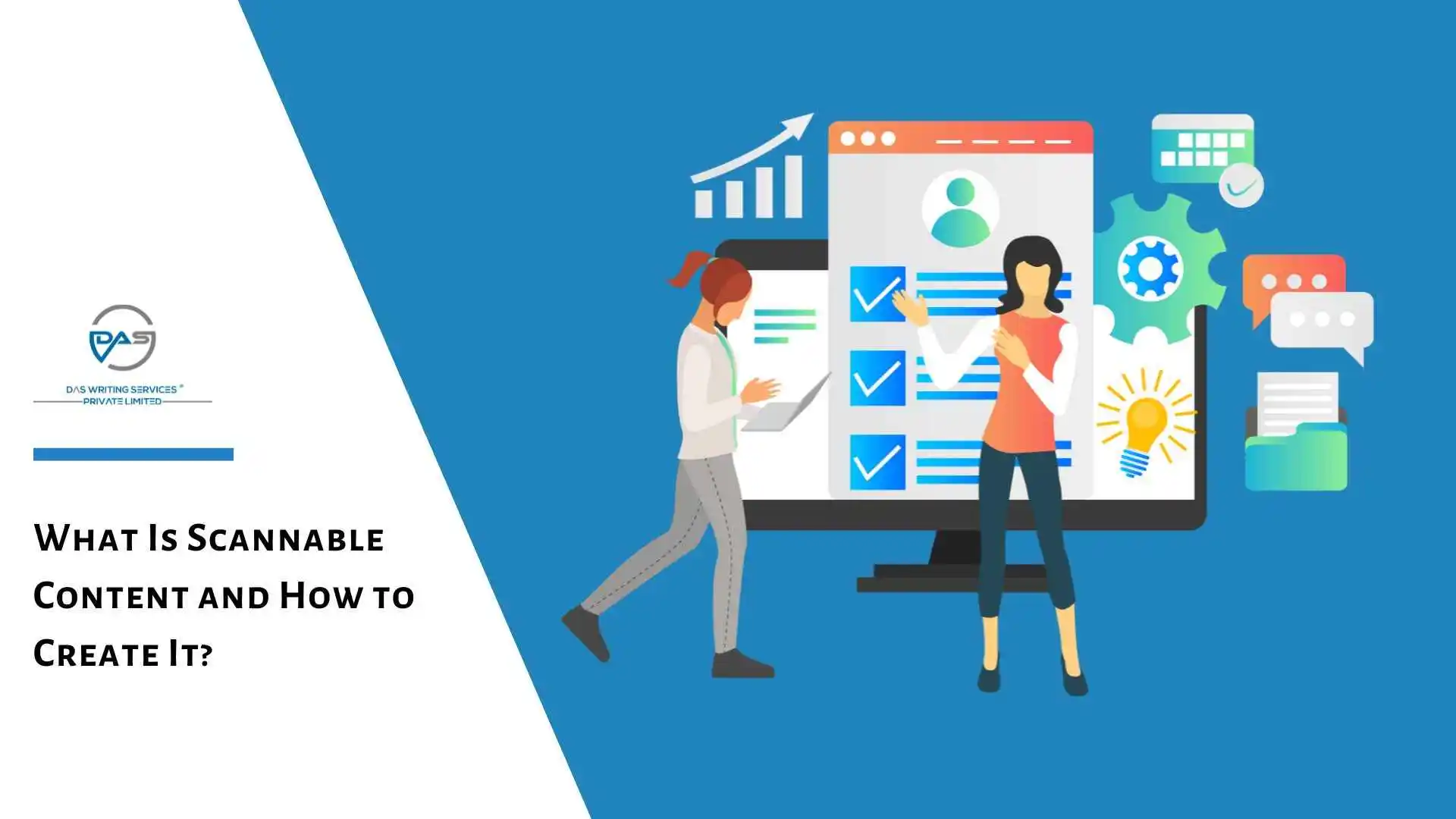

Leave a comment